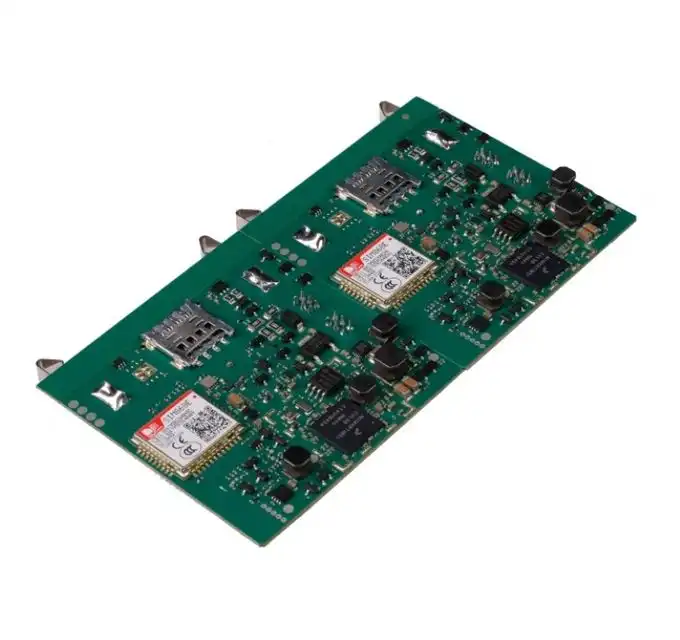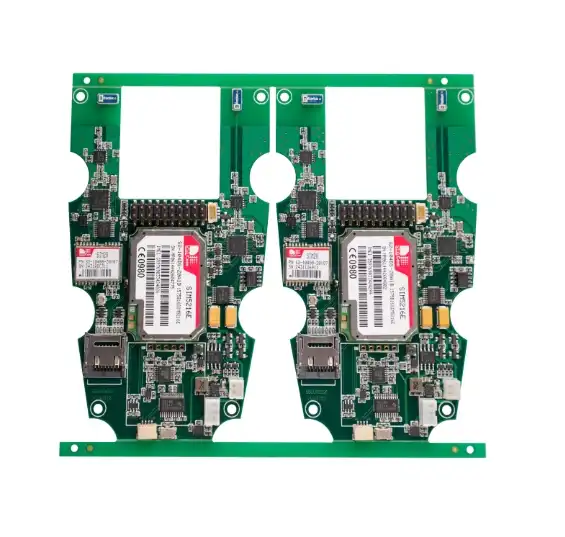Understanding SMT Assembly
Surface Mount Technology (SMT) has revolutionized the electronics manufacturing industry since its introduction in the 1960s. This advanced assembly method involves directly placing and soldering components onto the surface of a printed circuit board (PCB). SMT has become the dominant assembly technique for modern electronics due to its numerous advantages in terms of efficiency, miniaturization, and performance.
The SMT Process
The SMT assembly process typically involves several key steps:
- Solder paste application: A precise amount of solder paste is applied to the PCB using a stencil.
- Component placement: SMT components are placed onto the board using automated pick-and-place machines.
- Reflow soldering: The PCB passes through a reflow oven, melting the solder paste and creating permanent connections.
- Inspection and testing: Automated optical inspection (AOI) and X-ray systems are used to verify proper component placement and solder joint quality.
This highly automated process allows for rapid assembly of complex boards with high component density. SMT is particularly well-suited for high-volume production and assemblies requiring miniaturization.
Advantages of SMT
SMT offers several significant benefits over traditional through-hole assembly:
- Higher component density: SMT allows for more components to be placed on a given board area, enabling smaller and more compact designs.
- Improved electrical performance: Shorter lead lengths and reduced parasitic effects contribute to better high-frequency performance.
- Faster assembly: The automated nature of SMT results in quicker production times, especially for high-volume runs.
- Lower production costs: While initial equipment investment may be higher, SMT typically results in lower per-unit costs for large production volumes.
- Reduced weight: SMT boards are generally lighter due to smaller components and the absence of through-holes.
These advantages make SMT the preferred choice for many modern electronic devices, from smartphones to automotive control systems.
Challenges in SMT Assembly
Despite its many benefits, SMT assembly does present some challenges:
- Heat sensitivity: Some components may be damaged by the high temperatures used in reflow soldering.
- Difficulty in rework: Replacing individual SMT components can be more complex than with through-hole assemblies.
- Reliability concerns: In high-stress applications, SMT solder joints may be more susceptible to failure than through-hole connections.
- Limited component availability: Not all electronic components are available in surface-mount packages.
Addressing these challenges requires careful design consideration, component selection, and process control during assembly.
Exploring Through-Hole Assembly
Through-hole assembly, also known as through-hole technology (THT), is a traditional method of electronic component mounting that has been used since the early days of PCB manufacturing. While SMT has largely supplanted through-hole assembly in many applications, THT remains relevant and essential for certain types of electronic products and components.
The Through-Hole Assembly Process
The through-hole assembly process involves the following steps:
- Hole drilling: Precise holes are drilled in the PCB at locations corresponding to component lead placements.
- Component insertion: Leads of through-hole components are manually or automatically inserted into the pre-drilled holes.
- Soldering: The board is wave soldered or selectively soldered to create permanent connections between component leads and PCB pads.
- Inspection and testing: Visual inspection, functional testing, and in-circuit testing (ICT) are performed to ensure proper assembly and functionality.
This process creates strong mechanical bonds between components and the PCB, making through-hole assembly particularly suitable for applications subject to mechanical stress or vibration.
Advantages of Through-Hole Assembly
Through-hole technology offers several advantages in specific situations:
- Stronger mechanical bonds: The leads passing through the board provide superior mechanical strength compared to surface-mount connections.
- Ease of rework and repair: Individual components can be more easily replaced or repaired in through-hole assemblies.
- Suitability for high-power components: Large, high-power components often require through-hole mounting for proper heat dissipation and mechanical support.
- Reliability in extreme conditions: Through-hole connections are often preferred in applications subject to extreme temperatures, vibration, or mechanical stress.
- Prototyping flexibility: Through-hole assembly can be more convenient for prototyping and small-scale production runs.
These characteristics make through-hole assembly a continued necessity in industries such as aerospace, automotive, and industrial control systems.
Limitations of Through-Hole Assembly
Despite its strengths, through-hole assembly has several limitations compared to SMT:
- Lower component density: Through-hole components generally require more board space, limiting miniaturization potential.
- Slower assembly process: Manual insertion and wave soldering are typically slower than automated SMT processes.
- Higher production costs: The additional drilling and manual labor involved often result in higher per-unit costs, especially for high-volume production.
- Limited high-frequency performance: Longer lead lengths can introduce parasitic effects that degrade performance in high-frequency applications.
- Increased board weight: Through-hole boards tend to be heavier due to larger components and the presence of plated through-holes.
These factors have contributed to the shift towards SMT in many areas of electronics manufacturing, particularly for consumer electronics and high-volume production.
Choosing Between SMT and Through-Hole Assembly
The decision between SMT and through-hole assembly is not always straightforward and depends on various factors related to the specific application, production requirements, and design constraints. Understanding the strengths and weaknesses of each approach is crucial for making informed choices in PCB assembly.
Factors Influencing Assembly Method Selection
Several key considerations come into play when choosing between SMT and through-hole assembly:
- Component availability: Some specialized or high-power components may only be available in through-hole packages.
- Board complexity: SMT is generally better suited for complex, high-density designs with many components.
- Production volume: SMT is more cost-effective for high-volume production, while through-hole may be preferable for low-volume or prototype runs.
- Reliability requirements: Applications subject to extreme conditions or mechanical stress may benefit from the robustness of through-hole connections.
- Electrical performance: High-frequency or high-speed designs often require the superior electrical characteristics of SMT.
- Rework and field serviceability: Through-hole assemblies are generally easier to repair or modify after production.
- Size and weight constraints: SMT allows for more compact and lightweight designs, crucial for portable or space-constrained applications.
Balancing these factors requires careful consideration of the project's specific needs and constraints.
Hybrid Assembly Approaches
In many cases, the optimal solution involves a hybrid approach, combining both SMT and through-hole assembly techniques on a single board. This strategy allows designers to leverage the strengths of each method where appropriate. Common scenarios for hybrid assembly include:
- Using through-hole connectors or high-power components alongside SMT for the majority of the circuitry
- Employing through-hole mounting for components that may require frequent replacement or upgrading
- Utilizing SMT for dense, high-speed sections of the board while using through-hole for more robust or specialized components
Hybrid assembly approaches require careful planning and coordination between different assembly processes but can result in optimized designs that balance performance, reliability, and cost-effectiveness.
Future Trends in PCB Assembly
As technology continues to evolve, several trends are shaping the future of PCB assembly:
- Increasing miniaturization: Advancements in SMT are enabling ever-smaller component packages and higher-density designs.
- 3D printing in electronics: Additive manufacturing techniques are being explored for creating novel PCB structures and component integration.
- Embedded components: Techniques for embedding passive and active components within PCB layers are being developed, further increasing density and performance.
- Advanced materials: New substrate and conductive materials are being introduced to enhance thermal management and electrical performance.
- Automation and Industry 4.0: Increased use of robotics, artificial intelligence, and data analytics in PCB assembly processes is improving efficiency and quality control.
These developments are likely to further shift the balance towards SMT for many applications, while also opening up new possibilities for hybrid and advanced assembly techniques.
Conclusion
The choice between SMT and through-hole assembly is a critical decision in PCB manufacturing that impacts product performance, reliability, and cost-effectiveness. SMT offers advantages in miniaturization, speed, and high-frequency performance, making it the preferred choice for many modern electronic devices. Through-hole assembly, while less common in high-volume production, remains essential for applications requiring robust mechanical connections or specialized components.
As a leading PCB assembly supplier and manufacturer, Ring PCB Technology Co., Limited understands the nuances of both SMT and through-hole techniques. Our expertise in advanced assembly methods, including hybrid approaches, ensures that we can provide optimal solutions for diverse project requirements. Whether you need high-density SMT assembly for cutting-edge consumer electronics or reliable through-hole construction for industrial control systems, our team has the knowledge and capabilities to deliver high-quality results.
By staying at the forefront of PCB assembly technology and maintaining flexibility in our manufacturing processes, we are well-positioned to address the evolving needs of the electronics industry. Our commitment to innovation, quality, and customer satisfaction makes us an ideal partner for OEMs and companies seeking comprehensive PCB and PCBA services.
FAQ
What is the main difference between SMT and through-hole assembly?
SMT involves placing components directly on the PCB surface, while through-hole assembly requires inserting component leads into pre-drilled holes.
Which assembly method is better for high-volume production?
SMT is generally more efficient and cost-effective for high-volume production due to its automated processes and faster assembly times.
Are there situations where through-hole assembly is preferred over SMT?
Yes, through-hole assembly is often preferred for high-power components, applications subject to extreme mechanical stress, and situations requiring easy field serviceability.
Advanced PCB Manufacturing Solutions | Ring PCB
Ring PCB specializes in advanced PCB manufacturing, offering high-density stack-up solutions with up to 48 layers, blind/buried vias, and tight tolerances. Our smart manufacturing facility, equipped with state-of-the-art technology, ensures precision and quality in every PCB we produce. From rapid prototyping to high-volume production, we provide comprehensive services including SMT assembly, testing, and quality assurance. For expert PCB solutions tailored to your needs, contact us at [email protected].
References
1. Johnson, M. (2021). "Surface Mount Technology: Principles and Practice." Electronics Manufacturing Handbook.
2. Smith, A. & Brown, B. (2020). "Comparative Analysis of SMT and Through-Hole Assembly Techniques." Journal of Electronic Packaging, 42(3), 215-230.
3. Lee, C. (2019). "Advancements in PCB Assembly: From Through-Hole to Surface Mount and Beyond." IEEE Transactions on Components, Packaging and Manufacturing Technology, 9(6), 1078-1092.
4. Garcia, R. et al. (2022). "Hybrid Assembly Approaches in Modern Electronics Manufacturing." International Journal of Advanced Manufacturing Technology, 118(5-6), 1523-1537.
5. Thompson, D. (2023). "Future Trends in PCB Assembly: Miniaturization, Automation, and Smart Manufacturing." Electronics Production and Test, 63(2), 34-41.





